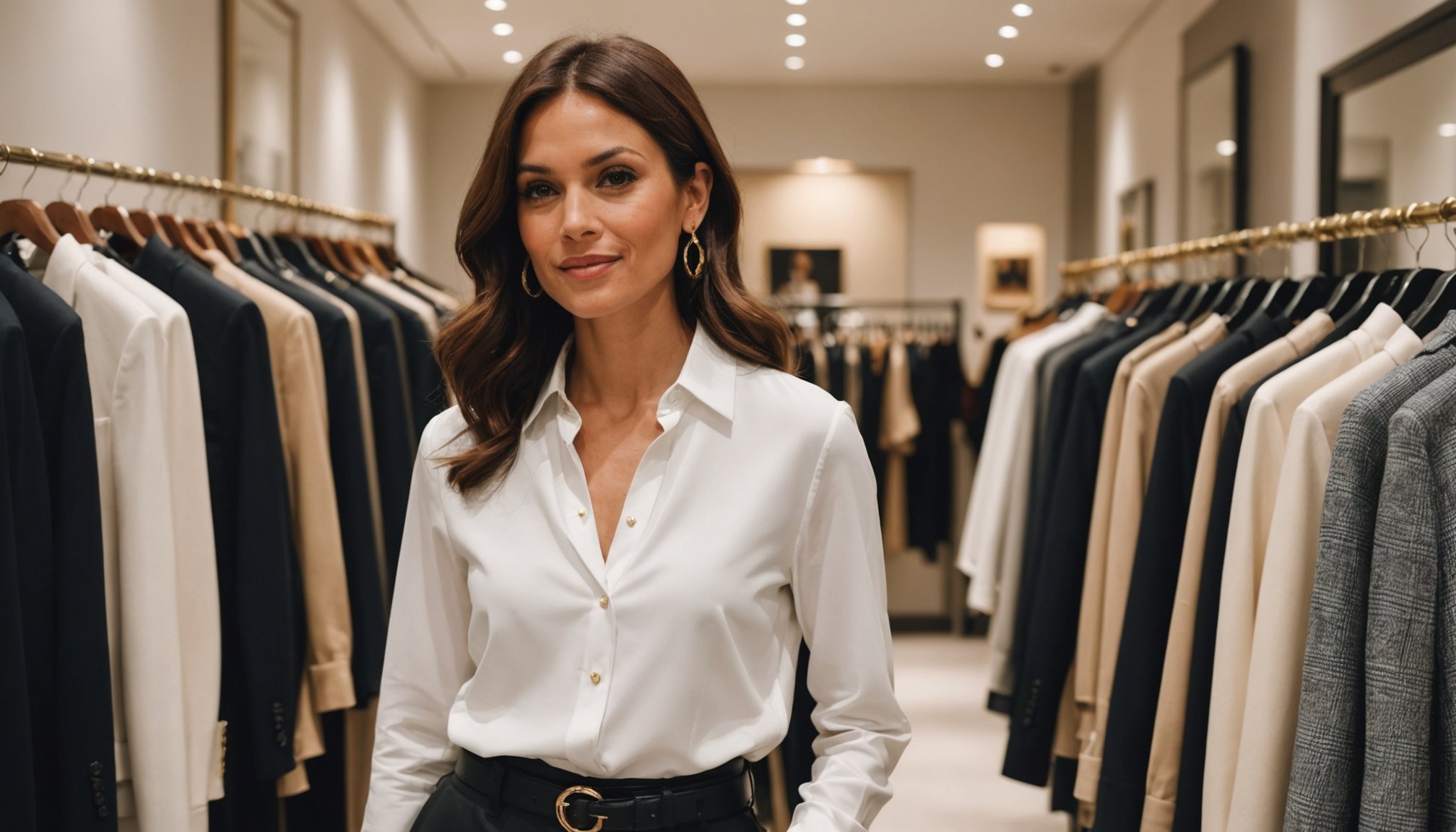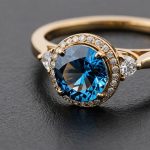Unlocking the Ultimate Fusion of Luxury and Affordable Fashion: Essential Tips for Achieving the Ideal Balance
In the ever-evolving world of fashion, the lines between luxury and affordability are increasingly blurring. Whether you’re a fashion enthusiast on a budget or someone looking to elevate your style without breaking the bank, achieving a balance between luxury and affordability is more accessible than ever. Here’s how you can unlock this ultimate fusion and create a wardrobe that exudes high-end style without the hefty price tag.
Understanding Your Personal Style
Before diving into the world of luxury meets affordability, it’s crucial to understand your personal style. This is the foundation upon which all your fashion choices should be built.
Also to read : Mastering british flair: essential styling tips for wearing elegant jewelry like a pro
Defining Your Signature Look
Defining your personal style is not just about following the latest fashion trends; it’s about creating a look that is uniquely yours. Tools like the Signature Style Quiz by Jen at Everyday Style School or Kelly’s guidance in Adore Your Wardrobe can help you clarify and define your look, making shopping and outfit-building easier and more efficient[1].
Editing Your Wardrobe
A well-edited wardrobe is key to looking polished and put-together. Get rid of items that are worn, ill-fitting, or out of style. Opt for a smaller, highly curated collection of pieces you love and wear regularly. This approach not only reduces decision fatigue but also ensures that every item in your wardrobe contributes to your overall style[1].
Have you seen this : The definitive handbook for selecting the best eco-conscious winter coats in the uk
Investing in Quality Over Quantity
When it comes to building a wardrobe that balances luxury and affordability, it’s essential to focus on quality over quantity.
Knowing When to Splurge
Invest in high-quality pieces that you will wear frequently over many years. These could be classic items like a well-tailored white shirt, a high-quality denim jacket, or a pair of timeless black trousers. While these items may have a higher upfront cost, they offer long-term value and durability[1].
Shopping Smart
Learn to discern quality garments and consider buying pricier products second-hand from consignment shops or online retailers like eBay, Poshmark, or Thred-Up. This way, you can acquire luxury items at a fraction of the original price without compromising on quality[1].
The Importance of Fabrics and Fit
The materials and fit of your clothing can significantly impact how luxurious or affordable your look appears.
Choosing the Right Fabrics
Natural fibers like wool, cotton, and silk generally look and feel better than synthetic materials. These fabrics hang well on the body and exude a sense of quality that synthetic fibers often lack. For instance, a cotton white shirt will always look more refined than one made from polyester[1].
Ensuring Proper Fit
Properly fitting clothing is essential for a polished look. If you find yourself needing frequent tailoring, consider shopping at stores that offer free or discounted tailoring services, like Nordstrom. A well-fitted outfit can make even the most affordable piece look high-end[1].
Accessorizing with Taste
Accessories can make or break an outfit, and choosing the right ones can elevate your look from affordable to luxurious.
Tasteful Accessories
Invest in a few key, understated accessories that you can wear often. These don’t have to be high-end designer pieces; it’s more about discerning what looks cheap versus what looks classy. For example, a simple yet elegant watch or a pair of classic sunglasses can add a touch of luxury to any outfit[1].
Avoiding Big Logos and Fakes
Wearing big logos or fake designer items can look try-hard and cheap. Instead, opt for quality pieces from lesser-known designers or second-hand luxury items. The trend of quiet luxury is gaining traction, making it easier to achieve a high-end look without the need for overt branding[1].
Luxury Brands for the Middle Class
In recent years, luxury brands have been making a concerted effort to cater to the middle class, offering more affordable options without compromising on the luxury experience.
Affordable Luxury Lines
Brands like Gucci, Burberry, and Ganni have introduced lower-priced entry items that deliver a taste of opulence without the exorbitant price tags. For instance, Gucci’s $440 pet leash or Burberry’s scarf bars offer a way to indulge in luxury at a more accessible price point[2].
Sustainability and Quality Concerns
However, this democratization of luxury raises concerns about quality and sustainability. As brands prioritize lower price points, they often rely on mass production and synthetic materials, which can compromise sustainability commitments. Consumers and brands must navigate these challenges to ensure that luxury remains synonymous with high quality and exclusivity[2].
Practical Tips for Achieving Luxury on a Budget
Here are some practical tips to help you achieve a luxurious look without breaking the bank:
Care for Your Clothes
Taking good care of your clothes can extend their life and keep them looking their best. Avoid over-washing, and follow the care instructions for each item. This simple practice can make even the most affordable pieces look luxurious and well-maintained[1].
Grooming Habits
Good grooming habits are essential for completing the luxury look. Keep your nails and hair clean and groomed, take care of your skin and teeth, and learn basic makeup techniques. These small details can make a significant difference in how polished and put-together you look[1].
Table: Comparing Luxury and Affordable Fashion Options
| Feature | Luxury Fashion | Affordable Fashion |
|---|---|---|
| Materials | High-quality natural fibers | Often synthetic or blended fibers |
| Craftsmanship | Attention to detail, high-quality construction | Mass-produced, may lack attention to detail |
| Price | Generally high-end, $1000+ | More affordable, $50-$500 |
| Brand Reputation | Established luxury brands like Gucci, Chanel | Affordable brands or second-hand luxury |
| Sustainability | Emphasis on durability and sustainability | Often prioritizes affordability over sustainability |
| Accessibility | Traditionally exclusive, now more accessible with entry-level items | Widely available, but may lack exclusivity |
| Style | Timeless, classic designs | Trend-driven, may be less timeless |
Quotes from Industry Experts
- “Luxury is in chaos,” says Gill Linton, a fashion and marketing expert and co-founder of the luxury vintage platform Byronesque. “The rising accessibility of luxury goods comes with its own set of challenges, particularly regarding quality and exclusivity.”[2]
- Katharine K. Zarrella, a longtime fashion editor, notes, “My experience sums up everything that’s gone wrong with what once served as semiotic shorthand for the good life. In recent years, luxury of all kinds has become obscenely, disgracefully, inconceivably costly. And the price hikes we’ve seen are steeper than what inflation would dictate. What’s worse? As costs climb, quality hasn’t. In fact, it’s largely declined.”[2]
- Caroline Reyl, head of premium brands at Pictet Asset Management, emphasizes the need for luxury brands to balance accessibility with their sustainability pledges: “They need to balance accessibility with their pledges to reduce environmental impact. Otherwise, they risk alienating a growing base of eco-conscious consumers.”[2]
Inventory Management and Sustainability
As luxury brands expand their reach to the middle class, inventory management and sustainability become critical issues.
Managing Inventory
The rise of outlet sales and overstock management can contradict the industry’s sustainability ethos. According to Bain & Company, 13 percent of all luxury goods were purchased through discount outlets in 2023, up from just five percent a decade earlier. This practice not only affects the exclusivity of luxury brands but also raises concerns about overproduction and waste[2].
Sustainable Practices
Luxury brands must align their manufacturing processes with sustainable principles. This includes promoting “fewer, better things” and using materials that are environmentally friendly. As consumers become more eco-conscious, brands that prioritize sustainability will be better positioned to maintain their luxury image and customer loyalty[2].
Achieving a balance between luxury and affordability in fashion is not just about the price tag; it’s about making informed choices that reflect your personal style, prioritize quality, and consider sustainability. By understanding your personal style, investing in quality over quantity, choosing the right fabrics and fit, accessorizing tastefully, and caring for your clothes, you can create a wardrobe that exudes luxury without the high-end price.
In the words of Gill Linton, “Luxury is not just about the price; it’s about the experience and the quality.” By following these tips and staying mindful of the broader trends in the fashion industry, you can unlock the ultimate fusion of luxury and affordable fashion, creating a look that is both stylish and sustainable.











